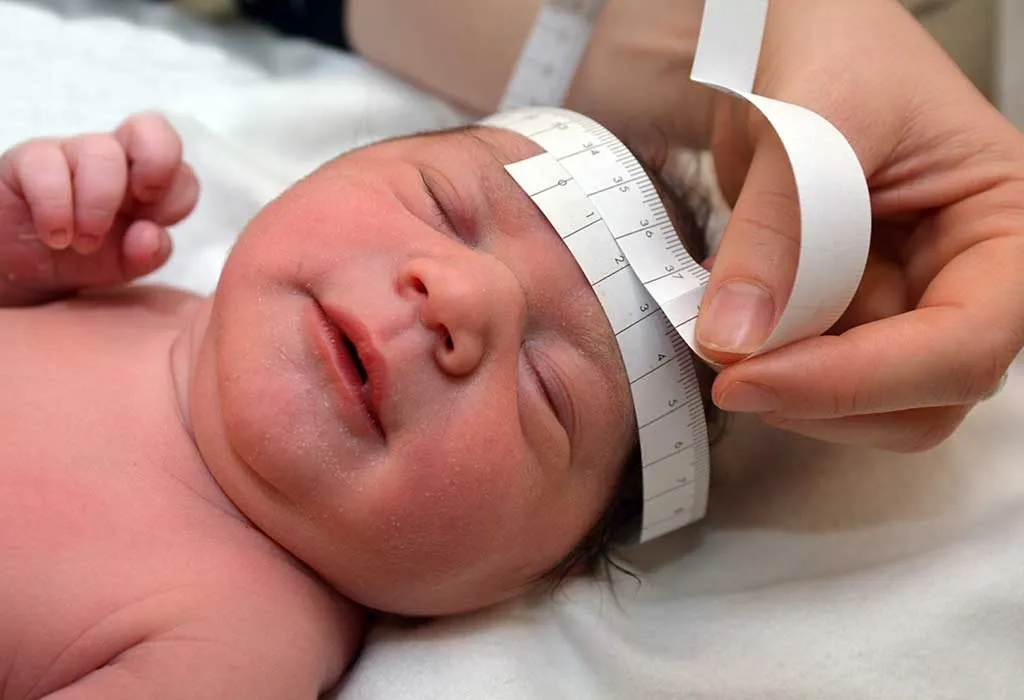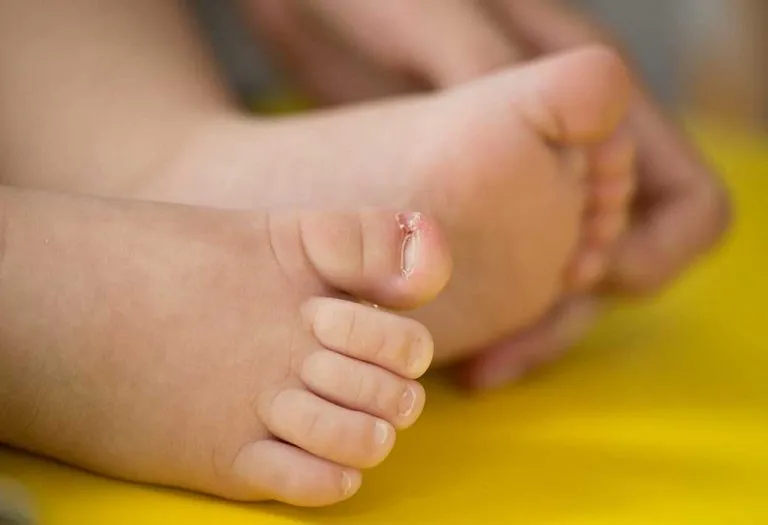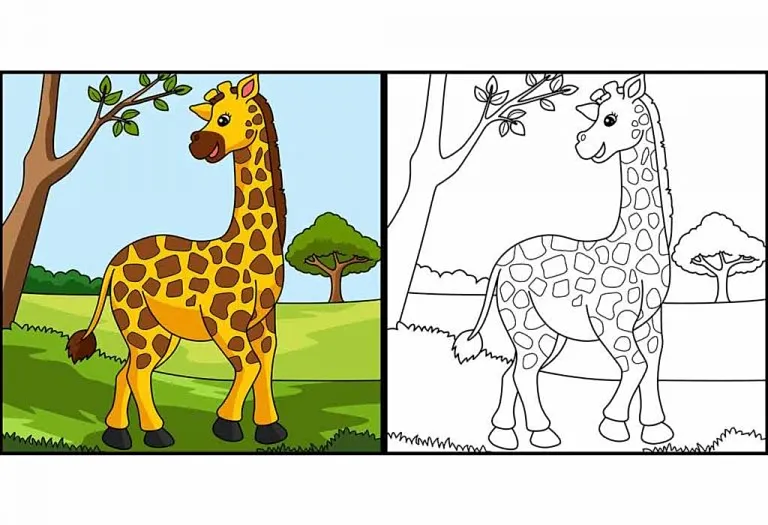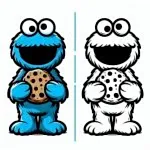Infant Head Circumference Chart (0 to 36 Months)
- What Is Head Circumference?
- Why Is It Important to Measure Baby Head Circumference?
- What Is Normal Baby Head Circumference?
- When Will Your Baby’s Head Circumference Be Measured?
- How Much Should Your Infant’s Head Grow Each Month?
- How Can You Measure Your Baby’s Head Circumference At Home?
- Baby Boy Head Circumference Chart By Age
- Baby Girl Head Circumference Chart By Age
- Infant Head Circumference and Intelligence
- When Should You Worry About Your Baby’s Head Circumference?
During every visit to the paediatrician, the doctor will note various aspects related to your baby’s growth and development. These will include weighing the child, checking his height or length, and measuring the circumference of his head. By recording these, your baby’s doctor can assess if your child is developing satisfactorily and if there are any roadblocks.
The changing circumference of a baby’s head as they grow in age and size is a paramount factor acting as an indicator of the baby’s growth and development. Read on to know more about how the circumference of your baby’s head shall change age-wise and what that indicates.
What Is Head Circumference?
The distance between the middle of the child’s forehead and the farthest part of the back of the head is known as the head circumference. A tape measure will be used for the purpose. The tape is placed just above the ears, and it is a painless method. But most babies dislike getting their head circumference measured and might become fussy, making it difficult for a doctor to get an accurate measurement in one attempt.
The measurement obtained will then be measured against a growth chart. This will help your doctor determine which percentile your baby falls into. For example, if your baby’s measurement is found to be in the 30th percentile, what it means is that of 100 babies, 30 have a smaller circumference.
Why Is It Important to Measure Baby Head Circumference?
Measuring a baby’s head circumference is of paramount importance due to several significant reasons. Employing British English and striving for perfection, let’s delve into the significance of this practice.
- Firstly, assessing a baby’s head circumference provides crucial information about its growth and development. A baby’s brain undergoes rapid growth during the early years of life, making head circumference an essential indicator of brain development.
- Furthermore, measuring head circumference aids in the early detection of certain medical conditions. Conditions such as microcephaly, where the head size is significantly smaller than average, or macrocephaly, characterised by an excessively large head, can be identified through careful monitoring of head circumference.
- Accurate head circumference measurement is also crucial in assessing a baby’s nutritional status. Inadequate nutrition during infancy can impede optimal brain development, leading to cognitive and developmental delays.
- Moreover, tracking head circumference provides valuable insights into the effectiveness of medical treatments or interventions. For instance, in cases where hydrocephalus (accumulation of fluid in the brain) is present, measuring head circumference helps evaluate the effectiveness of treatment, such as shunt placement or medication.
What Is Normal Baby Head Circumference?
A full-term baby is likely to have a head circumference measuring around 34.9 cm (13 ¾ inches) at birth. But this measurement is done only a few days after birth. Around one month of age, this would go up to 38.1 cm (15 in). There will be a difference in the measurements of boys and girls of the same age, with boys measuring on the higher side. Worrying about your baby’s large head circumference isn’t warranted. Also, factors such as heredity can impact the average circumference of a baby’s head.
When Will Your Baby’s Head Circumference Be Measured?
Your baby’s head circumference will be measured at specific intervals during routine check-ups and medical assessments. These measurements are typically conducted by healthcare professionals, such as doctors, paediatricians, or nurses. The frequency of measuring head circumference can vary, but it commonly occurs during the following key moments:
1. Newborn Examination: Shortly after your baby’s birth, a healthcare professional will conduct a thorough physical examination, which includes measuring the head circumference. This initial measurement establishes a baseline for future comparisons.
2. Routine Well-Baby Visits: As part of regular check-ups, scheduled at specific intervals in the first few years of life, your baby’s head circumference will be measured. These visits typically occur at 2 weeks, 6 weeks, 3 months, 6 months, 9 months, and 12 months, with subsequent visits occurring less frequently.
3. Developmental Assessments: During developmental assessments, which occur periodically throughout infancy and early childhood, healthcare professionals assess various aspects of your baby’s growth and development, including head circumference. These assessments aim to ensure that your baby is meeting important developmental milestones.
4. Concerns or Suspected Issues: If there are any concerns or suspicions regarding your baby’s growth, development, or signs of abnormalities, healthcare professionals may choose to measure the head circumference more frequently or conduct additional diagnostic evaluations to assess the situation more thoroughly.
How Much Should Your Infant’s Head Grow Each Month?
Every baby is different, and there are bound to be variations in how they grow and develop. This is true in the case of head circumference too.
- Commonly, it is assumed that a baby’s head circumference will measure around 2 cm larger than the chest up to six months of age.
- There will be rapid growth during the first four months.
- After this, from six months to two years, the chest and head measurements will be the same.
- After two years of age, the body will grow much faster than the head.
How Can You Measure Your Baby’s Head Circumference At Home?
Measuring your baby’s head circumference at home can be done with care and precision. While it is advisable to consult a medical professional for accurate measurements, there are methods you can follow. Here are three points outlining how you can measure your baby’s head circumference at home:
- Gather the necessary tools – Prepare a flexible measuring tape or a non-stretchable string, a ruler or a tape measure, and a pen or pencil to record the measurements.
- Position your baby – Ensure that your baby is calm and comfortable, either lying down or seated with their head upright and still. It may be helpful to have another person assist you in holding the baby gently and keeping them calm during the measurement.
- Measure the head circumference – Place the measuring tape or string around the widest part of your baby’s head, just above the eyebrows and ears. Make sure it is snug but not too tight. If using a string, mark the point where it overlaps and then measure the length with a ruler or tape measure. Record the measurement in centimetres (cm).
Baby Boy Head Circumference Chart By Age
The fontanel, a soft region on the baby’s head, will close as your child turns 18 months of age. Knowing about your baby boy’s growth is critical to ensure his development is on track. The following is a reference chart to estimate the measurements of your newborn boy’s head circumference right up to the time he turns a year and a half old.
| Age (in months) | 3rd Percentile Head Circumference (in centimetres) | 50th Percentile Head Circumference (in centimetres) | 75th Percentile Head Circumference (in centimetres) | 97th Percentile Head Circumference (in centimetres) |
| 0 | 31.48762 | 35.81367 | 37.00426 | 38.85417 |
| 12.5 | 44.136 | 46.49853 | 47.37091 | 48.96494 |
| 24.5 | 46.00872 | 48.72065 | 49.67762 | 51.36998 |
| 36 | 46.43344 | 49.68394 | 50.75597 | 52.57205 |
Source: For Both Charts: https://www.cdc.gov/growthcharts/html_charts/hcageinf.htm
Baby Girl Head Circumference Chart By Age
You must be worried about your baby girl’s growth as well right? Take a look at the chart given here to estimate the measurements of your baby girl’s head circumference right up to the time she turns a year and a half.
| Age (in months) | 3rd Percentile Head Circumference (in centimetres) | 50th Percentile Head Circumference (in centimetres) | 75th Percentile Head Circumference (in centimetres) | 97th Percentile Head Circumference (in centimetres) |
| 0 | 31.9302 | 34.71156 | 35.85124 | 38.1211 |
| 12.5 | 42.8426 | 45.19508 | 46.06532 | 47.65766 |
| 24.5 | 44.84678 | 47.53688 | 48.47548 | 50.12271 |
| 36 | 45.58284 | 48.63342 | 49.66656 | 51.44519 |
Infant Head Circumference and Intelligence

Wondering if there is a relationship between a baby’s head circumference and intelligence? There sure is:
- It has been found that children who had large head measurements at one year displayed higher IQ when aged between the age of four and eight. But if you are worried that your baby’s small head circumference, there is no need to be.
- In addition, various other factors such as the age to which the child is breastfed, the educational qualifications of the parents, and the environment they grew up also have an impact on the IQ level of the children.
When Should You Worry About Your Baby’s Head Circumference?
You should pay attention to your baby’s head circumference and seek medical advice in certain circumstances. Here are a few instances when you should consider discussing your concerns with a healthcare professional:
1. Significant Deviation From the Average Range
If your baby’s head circumference consistently measures significantly larger or smaller than the expected range for their age and gender, it is prudent to consult a healthcare professional. A notable deviation may indicate potential issues with brain development or abnormal growth patterns that require further evaluation.
2. Sudden Changes or Rapid Growth
A sudden and significant increase or decrease in your baby’s head circumference within a short period could be a cause for concern. Rapid changes may suggest underlying conditions that need attention, such as hydrocephalus (excessive fluid accumulation in the brain) or failure to thrive.
3. Lack of Developmental Milestones
If your baby’s head circumference is not proportionate to their overall growth and development, it is important to seek medical advice. Delayed or impaired developmental milestones, such as delayed motor skills or cognitive abilities, can indicate underlying issues that may affect head circumference.
4. Abnormal Physical Features
If your baby’s head shape appears noticeably asymmetrical or exhibits abnormal physical features, it is advisable to consult a healthcare professional. These features may include unusual bulges, depressions, or abnormalities in the skull shape, potentially related to conditions requiring medical attention.
Since your doctor will have a record of your baby’s measurements right from birth, he will know if there is any cause for concern. Such occurrences are quite rare and often accompanied by other health issues. Urinary, cardiac, skeletal, and renal abnormalities and cerebral palsy and epilepsy are just some issues that might be detected. Early detection can prove helpful in seeking intervention, including surgical options. Most children who undergo treatment and surgery recover completely and lead normal lives as adults.
Disclaimer: This information is just a guide and not a substitute for medical advice from a qualified professional.
References/Resources:
1. Mujugira. A, Osoti. A, Deya. R, et al.; Fetal head circumference, operative delivery, and fetal outcomes: a multi-ethnic population-based cohort study; https://www.ncbi.nlm.nih.gov/pmc/articles/PMC3653751/; May 2013
2. Newborn Measurements; Stanford Children; https://www.stanfordchildrens.org/en/topic/default?id=newborn-measurements-90-P02673
3. How to Measure Head Growth; University of Minnesota; https://med.umn.edu/adoption/resources/how-measure-head-growth
4. Sindhu. KN, Ramamurthy. P, Raghava. V; Low head circumference during early childhood and its predictors in a semi-urban settlement of Vellore, Southern India; https://bmcpediatr.biomedcentral.com/articles/10.1186/s12887-019-1553-0; June 2019
5. First Month: Physical Appearance and Growth; Healthy Children; https://www.healthychildren.org/English/ages-stages/baby/Pages/First-Month-Physical-Appearance-and-Growth.aspx
6. Data Table of Infant Head Circumference-for-age Charts; CDC; https://www.cdc.gov/growthcharts/html_charts/hcageinf.htm
7. Head circumference for age; WHO; https://www.who.int/tools/child-growth-standards/standards/head-circumference-for-age
Also Read: Your Newborn Baby’s Growth and Development
















